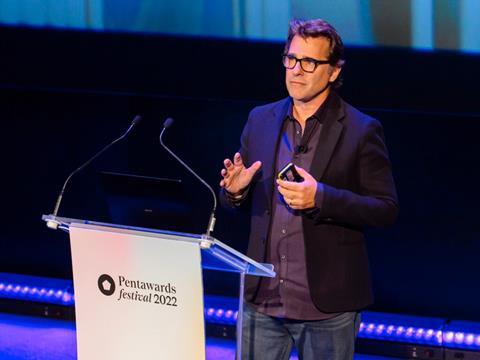
There’s a quiet power in the way Kevin Marshall speaks about design. Not as something ornamental, but as a profoundly human act - a way of listening, including, and building bridges between people and the products they depend on. As Senior Creative Director of Packaging Design and Content Development at Microsoft, Marshall has spent decades shaping how one of the world’s most influential brands thinks about packaging: not merely as a container, but as an extension of empathy, understanding, and access.
For Marshall, the story begins with the tactile, intimate act of opening a box. “Designing for all” has become crucial for Microsoft, spanning Surface, Xbox, Mixed Reality, and beyond. Every crease, fold, and tab is an invitation, a message that the user belongs. In a marketplace where packaging is often the first barrier, or bridge, between a person and the product they need, this philosophy aims to elevate the ordinary into something profoundly inclusive.
The moment it all changed
The spark came in 2018 with the Xbox Adaptive Controller, a product co-created with the gaming and disability communities. “It was such a unique and purpose-built product, we immediately knew that the package also had to be just as mindful and as inclusively designed, as well,” Marshall recalls.
What followed was a crash course in rethinking everything designers take for granted. “It was a steep learning curve, in a very short period of time, but many of the design fundamentals that we continue to leverage today, we learned at the time. We had to reinvent what packaging success meant to deliver an experience that felt right for such a wonderfully adaptive controller.”
Early assumptions about packaging simplicity quickly gave way to a more nuanced understanding of user needs. “After seeing the first proofs of concept and understanding the product vision better, we realised that putting this unique product into an everyday package was going to be a missed opportunity. Or worse, a diminishment of what the product represented.
“It was on the heels of this product launch that we decided to lean in and build a design culture around inclusive experiences and launched a portfolio-wide strategy that prioritised accessibility across all product and platform packaging.”
Marshall’s approach is built around a simple principle: ‘Design for One, Extend to Many.’ “What that means is that creative solutions designed to address a particular disability can more often than not have benefits for a diverse range of people. It’s a beautiful idea that by focusing on solving for a particular condition or circumstance, goodness can come from that solutioning in a variety of ways for different people.”
At the core of this philosophy is co-designing: a recognition that the disability community are the true experts, and that they must be integrated into the design process from day one. “Co-designing is more than just running user tests or surveying customer preferences. It’s the recognition that members of the disability community are the true experts, and that they need to be involved and integrated into your design process from the very beginning.”
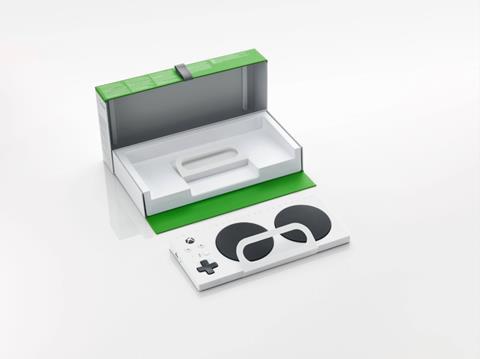
Design as empathy in motion
This is design as empathy in motion, and aims to transform what could be a restrictive or purely functional exercise into a platform for creativity and innovation. Marshall emphasises that a designer’s job is not simply to satisfy functional needs, but to translate insight into holistic experiences.
“It’s the job of the Designer to take insights collected during the creative process and distil them into moments, elements and experiences that not just satisfy the functional needs at hand, but also appeal to a wide range of consumers in the right way.”
Small interventions can yield outsized results. Marshall explains: “Usually, we are testing to see if a small change makes an incremental difference for a specific audience. Later, we will think about how to extend our findings more broadly. Likewise, going back to what I said earlier about picking a single accessibility goal to help get you out of the gate, it’s important to not try to boil the ocean.
“If you try to tackle all accessibility issues at once, it can feel overwhelming. Lastly, what you discover is, some solutions address multiple issues at once. For instance, the tactile elements we have added to our tabs serve as both a wayfinding signal for people with low vision and make gripping easier for those with limited grip strength. This is just one example of how a seemingly narrow solution can have broad applicability.”
The project also challenged Microsoft’s most deeply held packaging principles. “It was definitely a humbling experience to learn that some of our most tried and true packaging principles needed revisiting. For example, we had a strong principle that there should be a single path of entry to access the product, ensuring simplicity and success. What you learn is that people with limited mobility devise their own strategies, and each person’s strategy is unique. Supplying multiple paths to get to the product ensures that more people will have the opportunity to be successful.”
A roadmap for change
Microsoft’s commitment to accessible packaging has been codified in the newly launched Creating Accessible Packaging: An Inclusive Design Guide, a resource designed to help brands and designers embed accessibility into every stage of the packaging process.
The Guide outlines strategies, principles, and case studies drawn from Microsoft’s own experience, demonstrating how inclusive thinking can enhance the customer experience without compromising creativity or business objectives. It is less a rulebook and more a call to action – a framework for starting somewhere meaningful, even if incremental, and building a culture of inclusion over time.
Marshall also emphasises the importance of actionable first steps. “I don’t think we specifically state this in the Guide, but an incredibly impactful act for a brand to take would be simply to set an accessible goal. Pick a product. Pick a package that you want to make more inclusive. Look at your roadmap, frame a business case and then decide where you’d like to begin and where your most impactful opportunities might be.
“Simply making the decision to explore what inclusive packaging design might mean to your product line is an incredibly empowering step. And don’t forget to find advocates and allies along the way. Seek out like-minded peers as you set your goals… I think you’d be surprised at how quickly you can build excitement and momentum once you decide to begin.”
Contrary to the myth that inclusive design inflates cost, Marshall frames it as an exciting creative frontier. “Inclusive design is a methodology; it’s a mindset and approach to creating experiences. There’s nothing specific about this methodology that would automatically drive up the cost. And regarding design creativity, quite the contrary: we find it to be an incredibly exciting area of creative possibility, especially when you include members of the disability community.
“We consider inclusive design to be an open-ended question, without a right or wrong answer. Managing cost implications is part of a designer’s job. So is managing partner expectations. Ultimately, design is a brand and business lever that can deliver cost efficiency if that’s a success criterion, or heightened accessibility, or both. In my experience, project cost restrictions drive innovative thinking if approached with curiosity and a growth mindset.”
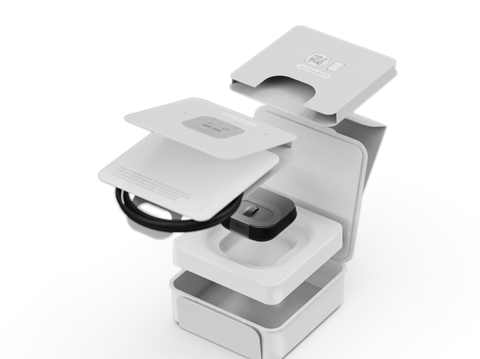
Accessibility as a brand imperative
Beyond the practical steps of implementing inclusive design, Marshall views accessibility as inseparable from the story a brand tells. It is not just about usability or compliance; it is about signalling to customers that they are seen, considered, and valued.
Every decision, right down to the smallest detail, such as a tab, a tactile cue, or an alternate path within a package, becomes a reflection of a brand’s values and its commitment to inclusivity. This perspective can transform accessibility from a technical exercise into a strategic lens through which the brand’s identity and purpose are expressed.
“Every decision we make tells the customer a story about our brand,” he adds. “When we design products and packaging that include as many people as possible, we can’t help but expand the vision of our brand.” And while innovation often outpaces policy, he recognises the role of regulation as a baseline - one that the industry is beginning to interpret in more ambitious, inclusive ways.
“To say that innovation is ahead of policy is no dig at policy. Innovation is not policy’s role. We pay attention to regulations, of course, but in honesty, they are not a big driver of our work. Having said that, regulators in places like Europe and India are having meaningful discussions about what it means for packaging to be inclusive for as many people as possible, and this is only a good thing.”
The horizon for accessible design is expanding into the digital. Marshall is exploring how physical packaging can seamlessly connect with screen readers, QR codes, mobile websites, and AI-enabled technologies that guide and empower users.
“We are currently focused on how to extend the packaging experience to the digital space, where people can take advantage of accessible technologies such as screen readers to support their unboxing experience. Technologies like QR codes and mobile websites are not new, but there is still work to be done in creating a standard, seamless handoff from the physical to the digital space.
“Establishing conventions around digital handoffs is not something that a single company can accomplish. It will take the industry as a whole to agree on aligned standards and practices to create friction-free experiences for all customers. Looking ahead, I expect AI to be a game-changer, particularly for individuals with low or no vision. It’s fascinating to think about what cues we can build into our packaging to help guide the AI that is guiding the person.”
At London Packaging Week, Marshall will bring this philosophy to life in his session “Non-Negotiable Design: Why inclusive packaging must work for all”, taking place on Wednesday, 15 October (10:30–11:00 AM) on the Food & Consumer Stage.
If you liked this story, you might also enjoy:
The ultimate guide to the Packaging and Packaging Waste Regulation in 2025
How are the top brands progressing on packaging sustainability?
Everything you need to know about global packaging sustainability regulation in 2025
The key to increasing the use of reusable packaging in supermarkets

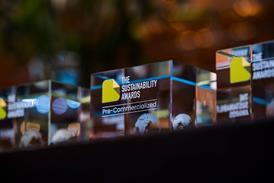



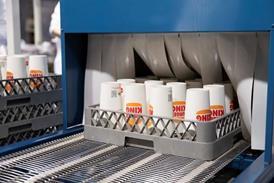
















No comments yet